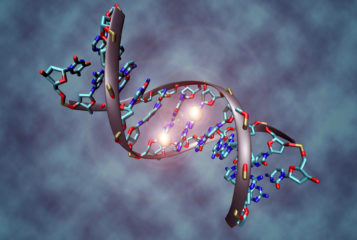Gene therapy can reverse the effects of ageing in mice, researchers claim.
Using cellular reprogramming, adult cells were partially changed back to an embryonic state and, after six weeks of treatment, the mice looked younger, had improved skin and muscle tone and lived 30 percent longer.
'This is the first time that someone has shown that reprogramming in an animal can provide a beneficial effect in terms of health and extend their lifespan,' said Professor Juan Carlos Izpisua Belmonte, who led the work at the Salk Institute in La Jolla, California.
The research team used a technique that stimulates the expression of four genes, known as Yamanaka factors, which convert adult cells to induced pluripotent stem cells by reversing epigenetic markers.
Epigenetic markers cause cells to become specialised by controlling genetic expression. Removing them resets an adult cell into a stem cell state. However, by turning the Yamanaka factors on for just two to four days, the cells retained their specialised function while age-associated degeneration was diminished.
In the study, published this month in Cell, the treatment was applied to mice with the genetic mutation responsible for Hutchinson–Gilford progeria syndrome – a disorder that causes rapid ageing, organ dysfunction and dramatically shortened lifespan in children. The four Yamanaka factors were intermittently switched on when the mice were exposed to an antibiotic in their drinking water. After six weeks of treatment, skin, spleen, kidney and stomach tissue showed an improved appearance, the structure and function of the cardiovascular system was enhanced, and lifespan extended from 18 to 24 weeks.
The current findings add to the mounting evidence that the ageing process is not simply the result of 'wear and tear', but instead caused by epigenetic processes.
'We did not correct the mutation that causes premature ageing in these mice,' says Professor Izpisua Belmonte. 'We altered ageing by changing the epigenome, suggesting that ageing is a plastic process.'
The team also investigated mouse models of injury, and showed the method could regenerate muscle tissue and replace lost insulin-making beta cells in the pancreas.
'Our study shows that ageing may not have to proceed in one single direction. With careful modulation, ageing might be reversed,' says Professor Izpisua Belmonte.
However, the researchers say the main focus of the gene therapy is not to increase life expectancy, but to prolong health.
The therapy is not yet ready for application in humans, and previous attempts in mice had led to the development of tumours and early death. Furthermore, treatment in humans could require embryos to be genetically manipulated.
Professor Izpisua Belmonte is nevertheless hopeful that eventually 'these chemicals could be administrated in creams or injections to rejuvenate skin, muscle or bones … and might be in human clinical trials in the next ten years.'
Professor David Sinclair of Harvard University, who was not involved in the study but who is carrying out similar work, told Scientific American that 'this work is the first glimmer that we could live for centuries'.






Leave a Reply
You must be logged in to post a comment.